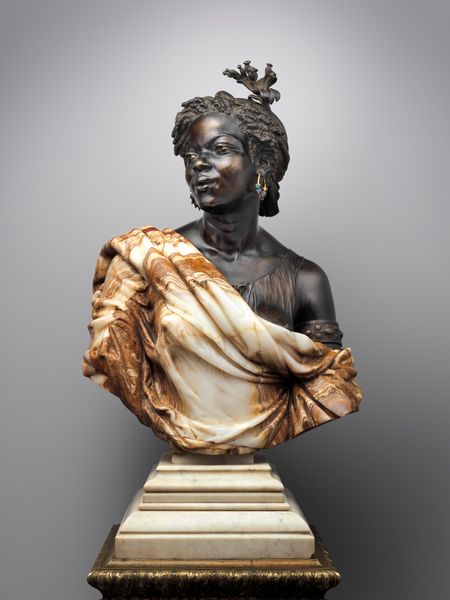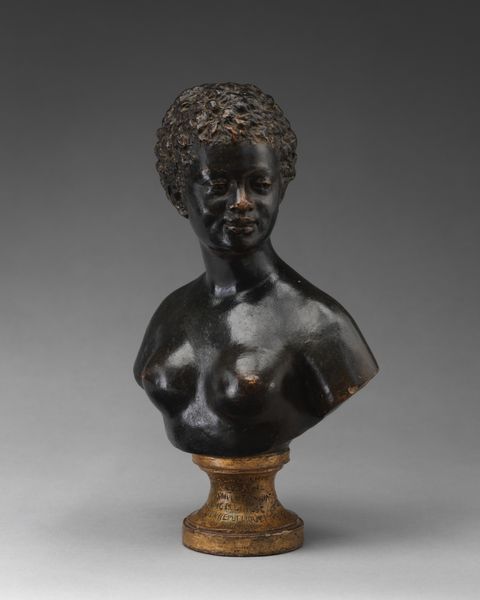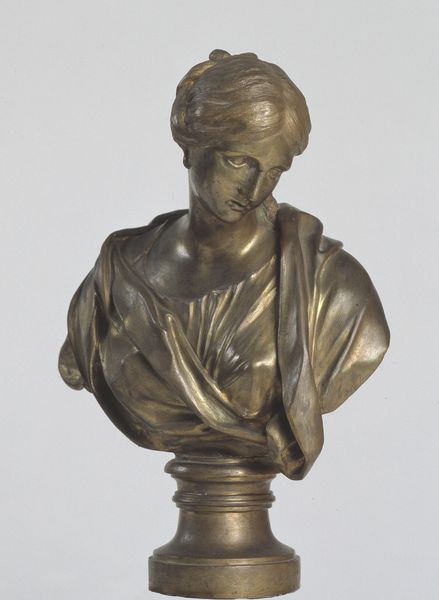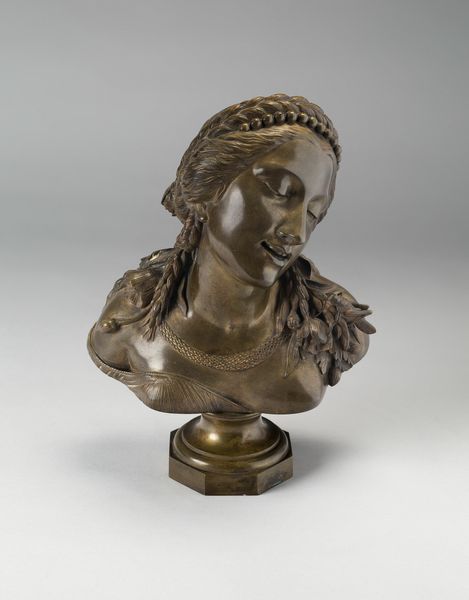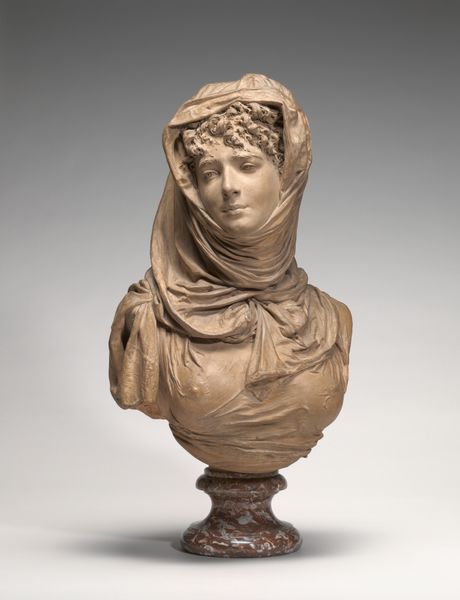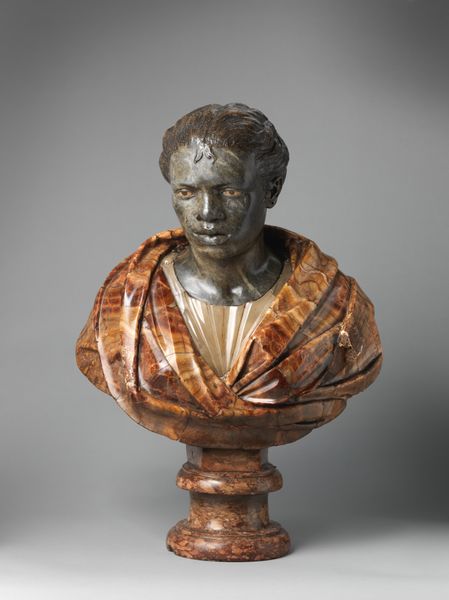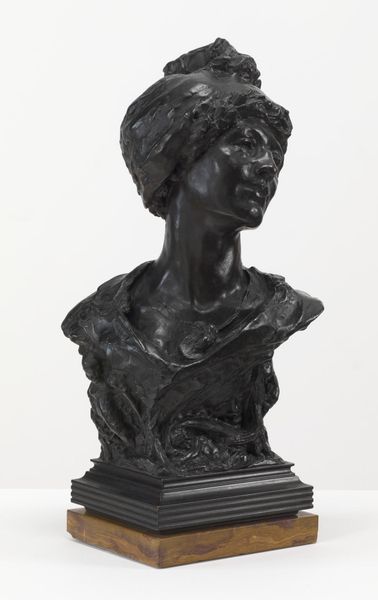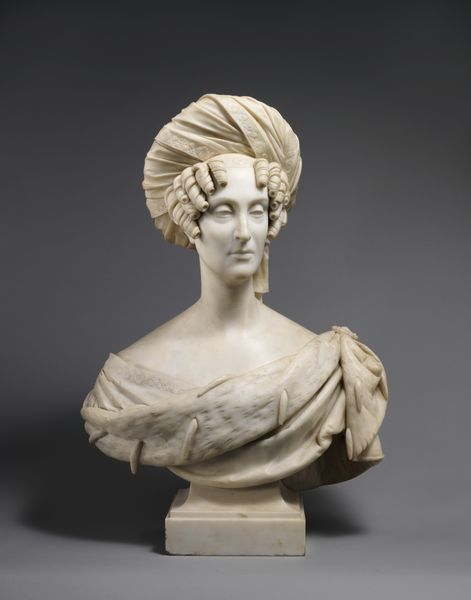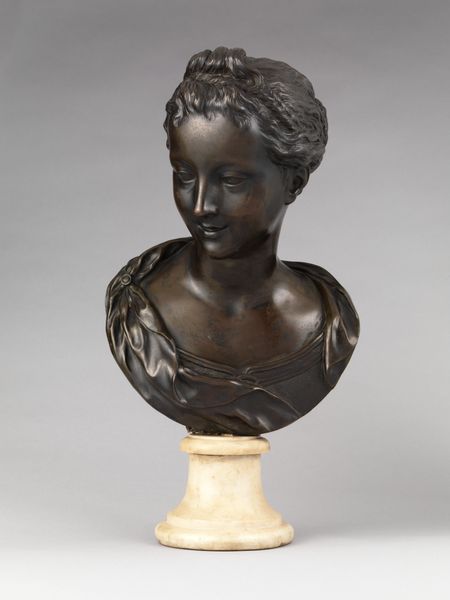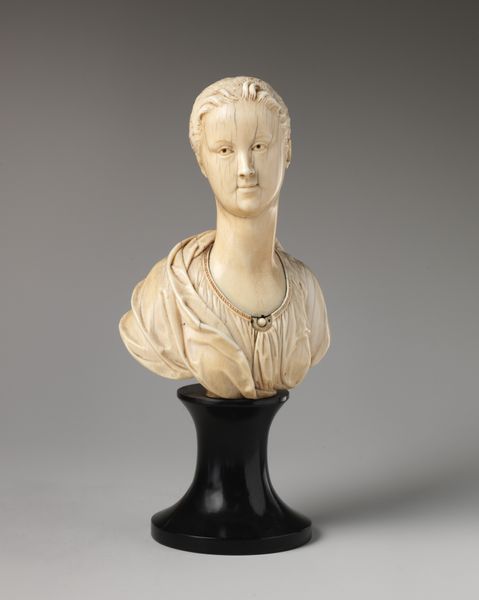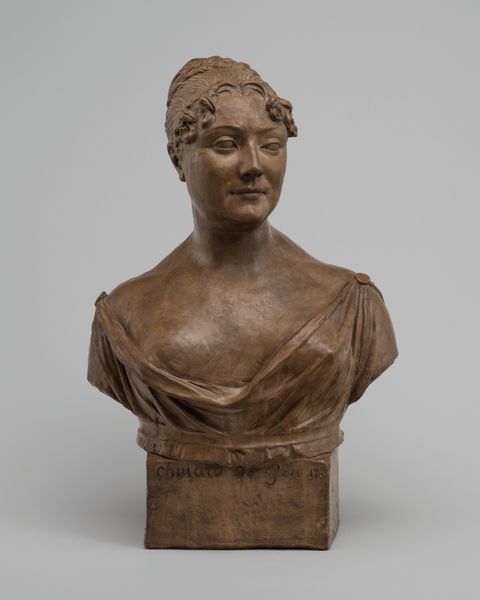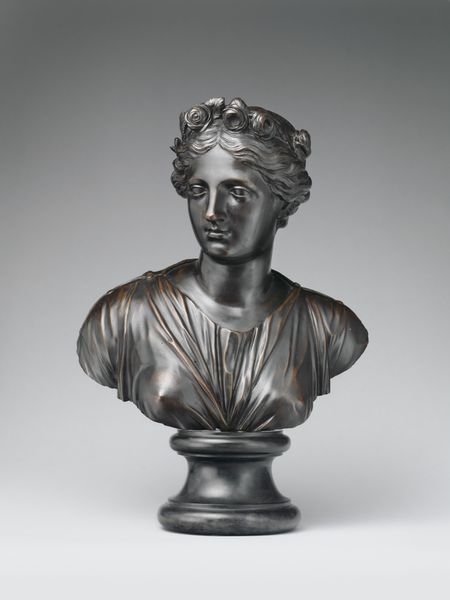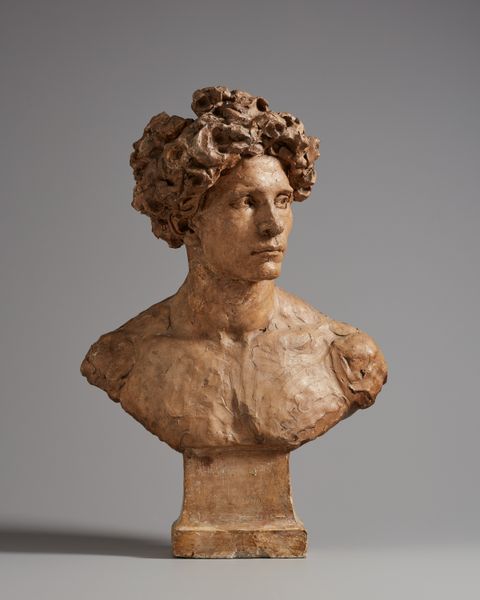
sculpture, marble
#
portrait
#
baroque
#
sculpture
#
sculpture
#
decorative-art
#
marble
Dimensions: field dims: 26 × 17 × 9 1/2 in. (66 × 43.2 × 24.1 cm)
Copyright: Public Domain
Curator: Let’s turn our attention to this striking piece: an 18th-century marble sculpture, “Bust after the Borghese Moor,” attributed to Nicolas Cordier and currently housed at the Metropolitan Museum of Art. Editor: The first thing that hits me is the contrast – the polished obsidian face against that almost flambéed drapery. It’s kind of unsettling, yet strangely alluring. Like gazing into the depths of space cloaked in autumn. Curator: The choice of materials is quite deliberate. We see here an example of polychrome sculpture that was popular during this time. Sculptors combined different colors of marble, sometimes painting and gilding as well, to heighten the naturalism, to bring the statue to life. It was particularly used during the baroque era. Editor: Alive is right – almost too alive. Those eyes feel like they’re boring into you. I wonder, what statement the artist making portraying someone of African descent in this manner? Was this meant to celebrate or otherize? The expression suggests a thoughtfulness. A story untold. Curator: That’s a critical point to raise. Statues of enslaved individuals were common in Europe to convey a display of power and opulence. Depicting Black figures in European art was laden with symbolism tied to trade, power, and emerging ideas of race and empire. How the subject’s identity is handled is a complicated subject—particularly when their stories often go untold. Editor: Absolutely, I mean, is it a portrait? Or is it more of a type—a representative figure meant to embody exoticism or subjugation? Those silky dark eyes feel human to me though. There is humanity in that form. That makes the issue more important to consider, and, admittedly, harder to untangle. Curator: Context, I agree, is key here. We must try to reconcile the artistic achievement, with the social conditions that made such work possible. How do we interpret art which challenges contemporary values and attitudes? Editor: Maybe we don’t fully reconcile. Perhaps it’s about holding the tension between beauty and brutality, between admiration and critique. Maybe then the statue fulfills a new purpose – as a mirror reflecting our own evolving values.
Comments
No comments
Be the first to comment and join the conversation on the ultimate creative platform.
